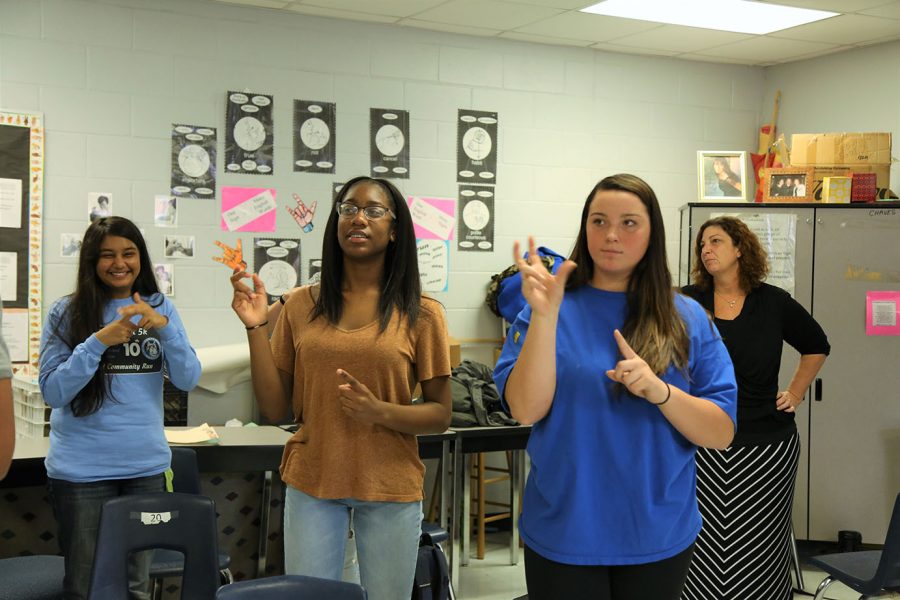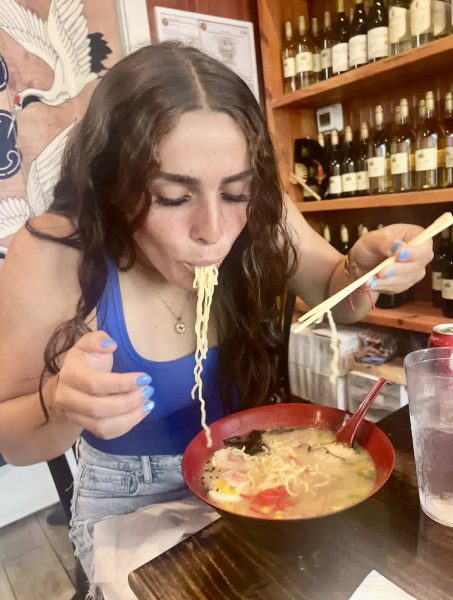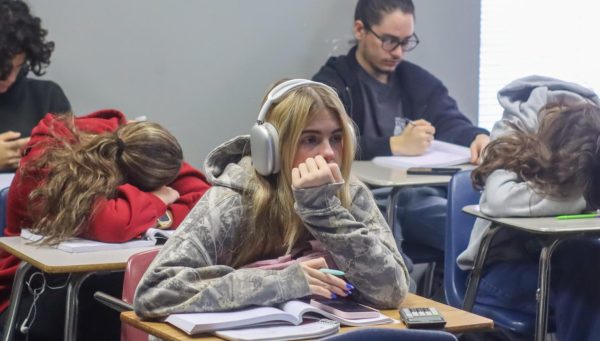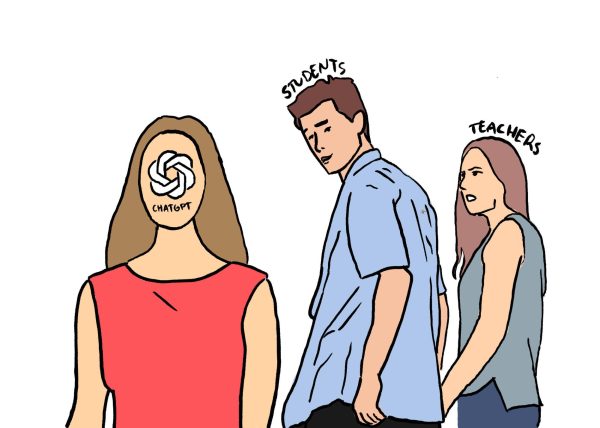Signs of greatness
photo by Kacy Lach
Junior Danielle Muse signs during ASL class. Muse first attended a silent dinner last year and enjoyed every minute. Members of any ASL class, or anyone who knows sign language, can attend silent dinners on the first Tuesday of each month.
Imagine having dinner with complete strangers. Imagine eating across from your teacher. Imagine that nobody is talking the entire night. ASL students, and even some who are not, attend events called silent dinners where students, teachers, families and members of the Deaf community get together to have dinner and simply sign.
This might seem unappealing and even a little scary, regardless if you are an ASL student or not. But to the majority of people who attend these silent dinners, it is a privilege and a good way to make new friends, especially if you are an underclassman or new to ASL.
Silent dinners started around 1999-2000 for Seminole County when ASL teacher Barbara Chaves and a couple other teachers from Lyman, where she worked at the time, and Oviedo decided it would be a good way for the students, even the few that were deaf, to be interactive with the Deaf community. After a brief meeting with the administration at the Oviedo Mall, it was decided that on the first Tuesday of every month, there would be a silent dinner in which students and teachers from local schools, including some colleges, would meet and converse over dinner through sign only.
“Some of the students that originally helped create these silent dinners still come to them now and help out,” Chaves said. “They somehow find their way back, no matter how far away they are.”
Students in ASL learn an important concept in their first year learning the language: the difference between deaf and Deaf. The physical act of not being able to hear is identified as deaf, but the act of being involved in the community and the culture of the deaf is labeled as Deaf. The Deaf community encompasses many different walks of life, from deaf, to hard of hearing, to people called codas, who are hearing children with deaf parents. According to Chaves, the community is welcoming and helpful, just like a family.
During silent dinners, about five or more deaf people plus a variety of students from different schools attend. Senior Elysse Rivera has recently been involved more and more in the Deaf world. She is only in ASL III, but her interest in sign has taken her to competitions, silent dinners and conventions. She describes silent dinners as the best way to get to know people who have the same interests as you; a connection begins to surface as soon as the first conversation in sign begins.
“I remember being scared and then immediately talking to people,” Rivera said. “I think it’s a good way to make friends and to interact with the community because everyone is so welcoming and understanding.”
She attends silent dinners often and encourages more people, even the shy ones, to go to them. Most people have the misconception that going to silent dinners requires a person to be at a certain level of ASL, but the rules of silent dinners are simple: sign only and have fun. According to Chaves, most people are curious but their anxiety over whether they will be able to understand overwhelms them and they end up not going at all. To fix this, she says to gather all of that nervousness and use it because the community “takes you under their wing.” She says to go and learn and make friends, because it is a welcoming environment where the main purpose is not only to learn, but to explore other cultures and find out how similar people are despite their physical differences.
“Some of my students have gone on and become interpreters and sometimes they come back and visit, which is nice,” Chaves said. “But even the people they went on to do other things in other places, they come back and they still know how to sign and are welcomed back into the community. That in itself is just incredible.”
Your donation will support the student journalists of Hagerty High School. Your contribution helps us publish six issues of the BluePrint and cover our annual website hosting costs. Thank you so much!









